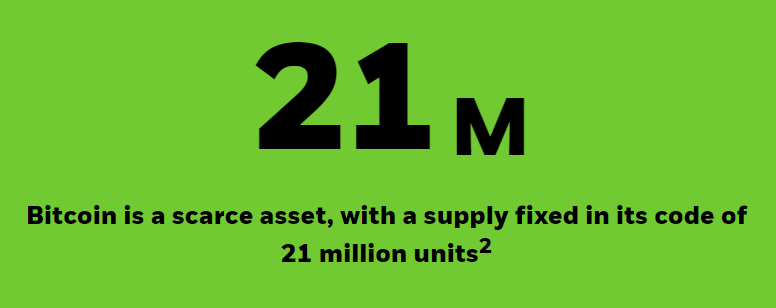Written by: Samara Cohen, Robbie Mitchnick and Dominik Rohe | iShares
THE BIG PICTURE
The launch of spot bitcoin ETFs in the U.S. represents a scalable bridge from traditional finance into bitcoin, helping to broaden access to bitcoin for mainstream investors. This is quite an evolution from bitcoin’s beginnings as a niche technology. But how did we get to this point? What has changed in bitcoin and the traditional finance worlds to enable bitcoin’s inclusion in the ETF wrapper?
BITCOIN'S BIG LEAP
Bitcoin, the world’s leading cryptoasset, has been on a journey since its launch 15 years ago, rising in terms of access, use cases, and market value. Bitcoin is the most widely adopted digital asset, holding over 50% of the $1.7 trillion market capitalization.1
Since its launch in 2009, several factors have driven bitcoin adoption, including its potential to reimagine money for a global audience, even while it has exhibited volatility.
Among factors increasing adoption:
- Bitcoin is able to transact across jurisdictions, creating a potential “global internet of value” that allows assets to move frictionlessly at low cost and in near real-time across borders.
- Bitcoin is a scarce asset, with a supply fixed in its code of 21 million units.2 Bitcoin is also decentralized and not subject to inflation.
- Bitcoin is available to anyone with a mobile phone and an internet connection, meaning it can help more people to participate in the global financial system.
THREE BIG SHIFTS
A new era of access to bitcoin through ETFs is now unfolding. In our view, three significant shifts have taken place to create the conditions for this moment.
1. Global forces accelerate investor interest
As the world changes, particularly in the post-COVID-19 era, several factors have helped elevate bitcoin’s appeal, including: the rise in global inflation, geopolitical fragmentation, and banking and fiscal concerns. The future of finance is changing how households and companies use cash, borrow, transact, and seek returns. The growth of younger populations and the middle class means more people are used to living their lives virtually, which makes bitcoin appealing.
2. Development of ecosystem infrastructure
There has been significant investment in crypto, and digital assets more broadly, along with an inflow of human capital. Bitcoin trading infrastructure has improved significantly to better meet the needs of institutional players. The funding and infrastructure improvements have helped bolster custody, transparency, and security — critical infrastructure given the unique security challenges associated with digitally native bearer assets.
3. Regulatory evolution
Policymakers have been assessing their existing financial regulatory frameworks to determine whether they provide adequate oversight of digital assets to ensure robust market participant protections while also allowing for growth and development of the asset class. This assessment, which has gained momentum in recent years, has led some jurisdictions to develop new or modified regulatory frameworks for digital assets to address the unique way the assets are issued, custodied, and traded.
NEW ERA OF ACCESS
Bitcoin has arrived at this moment of expanded access through the launch of spot bitcoin ETFs in the U.S. We believe that for many investors, the ETF could represent the preferred holding vehicle for bitcoin, and that this launch represents a new era that will be characterized by more access, choice, and convenience, all of which may benefit investors:
Access
ETFs provide investors efficient access in one standard wrapper to all kind of markets, asset classes, and regions. Spot bitcoin ETFs can help to reduce the complexities and operational burdens involved in owning bitcoin outright. ETFs also mean more types of accounts can hold the investment, from individual retirement brokerages to large institutional accounts. And they can see them in their portfolios so they can view their asset allocations and risk holistically.
Transparency & Liquidity
ETFs provide investors efficient access in one standard wrapper to all kind of markets, asset classes, and regions. Spot bitcoin ETFs can help to reduce the complexities and operational burdens involved in owning bitcoin outright. ETFs also mean more types of accounts can hold the investment, from individual retirement brokerages to large institutional accounts. And they can see them in their portfolios so they can view their asset allocations and risk holistically.


CONCLUSION
Bitcoin’s journey may be just beginning. Uniquely amongst cryptoassets, the infrastructure and investor recognition around bitcoin is now in place to support bitcoin on a broader scale as major forces boost adoption.
Now this new era is widening mainstream access to bitcoin via ETFs.
Although the exact path bitcoin takes is unknown, we believe this enhanced access, catalyzed by the convenience and utility of ETFs, may further boost bitcoin’s adoption as a potential store of value by a wider investing audience.
Related: Making Higher-Income People Pay for Social Security Shortfalls


